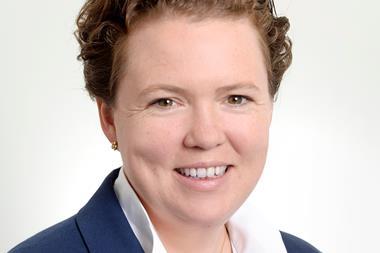Women and girls are likely to suffer more from climate change
Climate change is a catastrophe that continues to accelerate despite the global efforts to slow it. It is expected to cost the planet millions of lives and trillions of dollars in the coming decades, so failure to act now will mean inconceivable and dire ecological, sociological and economic consequences.
Women and girls are more vulnerable to the consequences of climate change than men, since they make up a larger proportion of the world’s poor and are more reliant for their survival on natural resources that are endangered by climate change. For example, scarcity of water can make collecting drinking water more difficult for girls and women, modify pastoralist behaviours, and force families to part ways and look for jobs further afield.
Girls’ education, hunger and well-being could also suffer. Climate-change solutions must acknowledge and confront these disparities by applying an intersectional lens to the difficulties encountered to effectively catalyse change. Gender considerations should not just be about being socially conscious but focus on using a gender lens to emphasise how gender affects climate outcomes and how climate outcomes affect gender.
Despite the reality that climate change affects women disproportionately, women have the potential to understand what is required for adapting to the fast-changing environmental situations, to find effective solutions and then act on them locally and internationally.
However, unequal involvement of women in the workforce and decision-making exacerbates disparities and frequently prevents them from actively engaging in planning and implementation of climate-related policies – leaving this immense potential largely underutilised.
In terms of mitigation and adaptation, women are excellent visionaries and change makers. As custodians of natural and household resources, the responsibilities women assume in their homes and wider communities equip them with useful insights to contribute to livelihood planning strategies that are adaptive to changing environmental conditions – this is a trend that the investment industry could work harder to recognise and align with.

We need to develop an enabling and supportive environment for women’s agency and leadership to realise their potential. Gender-smart investments help to build this environment, allowing enterprises and communities to benefit from the multiplier effects of women’s leadership and work ethics. Such investments aim to strengthen governance, decrease risk and drive innovation by focusing on women’s leadership, creativity, invention capabilities, employment and existing skills.
In the public and private sectors across all asset classes and geographical areas, gender-smart investments could assist investors in identifying opportunities and risks in the market that others might have overlooked, all while pursuing gender equality in a variety of ways.
A one-size-fits-all approach to integrating climate and gender into investments does not exist yet. While some strategies combine the two, others might add a climate lens to a gender-smart investment or a gender lens to a climate investment. The approach taken by an investor will depend on one’s personal aims, preferences, viewpoints, desires and concerns. Explored below are some of the fundamental reasons for gender and climate investing working better in tandem:
• Reducing the likelihood for disaster: climate change exposes every organisation, regardless of the industry and geography, to significant risks. According to expert opinions, climate change could put up to 10% of the global financial assets at risk by the year 2100 and is a risk no sensible investor can overlook. Ignoring the gendered demands of employees, consumers, vendors and other stakeholders may lead to the failure of organisations or funds. Many types of risks such as operating risks, market risks and even reputational risks will be created. Neglecting the needs and capabilities of women is a recipe for disaster;
• Creating long-term value: those who do not adapt to change risk lagging as environmental and social implications become more conventional in perception and governance. Investors must use an integrated climate and gender lens to increase value and generate improved results to ensure that the benefits are long term. The time has come to look at all opportunities through a climate and gender lens to obtain a sustainable, competitive edge in products, technology, innovation, personnel, supply networks and leadership;
• Increasing the societal influence: gender and climate can be perceived as keys that have the potential to open doors to a variety of societal aims. When the UN’s gender equality – Sustainable Development Goal 5 (SDG 5)– and climate (SDG 13) are integrated, they can directly affect many other SDGs like ending hunger (SDG 2) and promoting health and well-being (SDG 3);
• Exploring new opportunities for investments: as entrepreneurs, women have been creating revolutionary solutions to overcome the climate-change crisis. In climate-related investments, gender-smart governance and decision-making could enable fresh opportunities to invest in and across the private and public sectors. Women working in the sales, marketing, product and supply-chain networks can be crucial for an organisation to gain a competitive edge. Women form an increasingly significant market segment and make up 80% of the buying decisions in a household.
• Meeting investors’ expectations by reimagining and performing fiduciary duties: the old divide between profit-focused investing and impact-focused investing is no longer either relevant or affordable. Customers, employees and other stakeholders of an organisation expect capital to be used in a way that would generate not just financial returns for the firm but also positive benefits for the wider society and environment.
When combined, climate and gender investments have the potential to address climate-change mitigation, adaptation and resilience. The value of investing in female entrepreneurs, inventors and consumers must be recognised so that the negative effects of climate change on women can be minimised and the immense potential of women to lead the charge against climate change utilised.
Leadership has an impact that extends beyond monetary gains. Organisations with more gender-balanced governance have stronger climate-related policies and are more inclined towards pursuing sustainability. Over the medium term, the organisations that thoroughly investigate, comprehend and make use of the interactions between gender and climate lenses, will be the ones that can create the most effective impacts and be recognised by future investors.
While this might seem like an ambitious goal, the key aspect is to get started, as climate change is rapid, socioeconomic disparities are escalating fast and our greatest danger is inaction.
Giles Gunesekera is the founder and CEO of Global Impact Initiative
Topics
Towards Net Zero: COP26 and Beyond for Institutional Investors
- 1
- 2
- 3
- 4
- 5
- 6
- 7
- 8
- 9
- 10
- 11
- 12
- 13
- 14
- 15
- 16
- 17
- 18
- 19
- 20
- 21
- 22
- 23
- 24
- 25
- 26
- 27
- 28
 Currently reading
Currently readingGiles Gunesekera: A gender view on climate
- 29

























































No comments yet